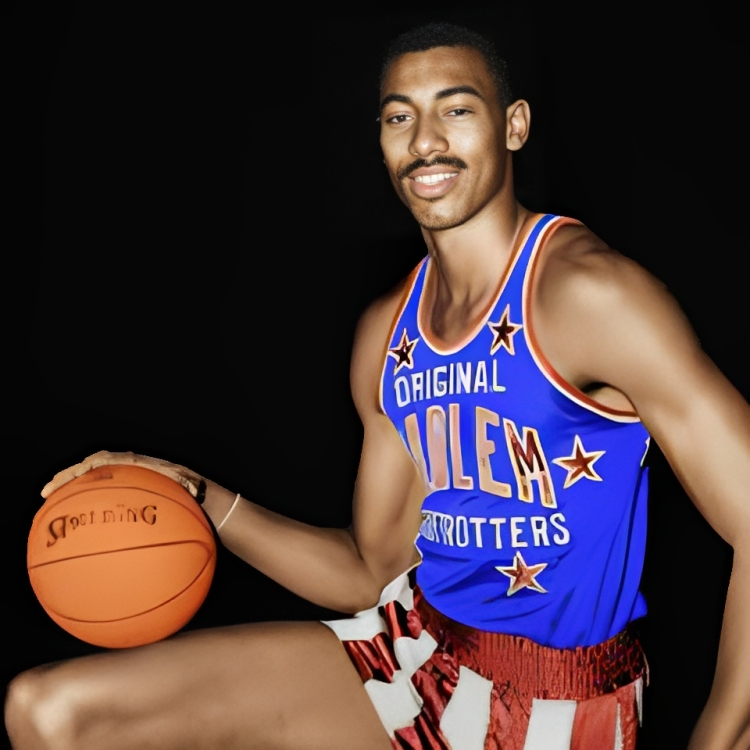WILT CHAMBERLAIN AND GEORGE MIKAN: LAKERS LEGENDS
Wilt Chamberlain on the Globetrotters
The Lakers organization of the National Basketball Association has a rich team history with many great players, seasons, and coaches. The Lakers have been a winning organization also, as they stand at second all-time for games won. The Lakers share the record for the most championships out of all teams in the NBA with 17. The Lakers have been a successful organization, to say the least, and they also have the largest fanbase of any organization. George Mikan and Wilt Chamberlain were two outstanding players for the Lakers that helped to shape the league.
So how did the Lakers come to be? The now-Lakers were founded in 1946 as the Detroit Gems. The Gems only played one season before they were sold, finishing with a record of 4-40. The franchise was sold in 1947 to Ben Beger and Morris Chalfin. The team then moved to Minneapolis.
After the move to Minneapolis, Minnesota, the owners of the franchise decided to change the name to the Lakers, because of the team’s location in the “land of 10,000 lakes”. This name change would be the first and only in the 77-year history of the franchise, even when the team relocated to Los Angeles, California in 1960.
In the early years of the franchise, George Mikan was not only the face of the Lakers, but the face of basketball at the time. Nicknamed “Mr. Basketball”, Mikan started his Lakers career in 1947. At this time, the National Basketball League (NBL) had not yet merged with the National Basketball Association (NBA), and the Lakers were part of the NBL. George Mikan set an NBL scoring record in his first year with the Lakers, with 1,195 points. Mikan played 1 year of professional basketball before joining the Lakers, playing for the Chicago American Gears. In this rookie season, he was voted Most-Valuable Player in the World Professional Basketball Tournament. He averaged 16.5 points per game in his rookie year and was voted into the All-NBL team.
Mikan stood at an astonishing (for the time) 6’-10’’, and weighed upwards of 270 lbs in the early ’50s. George Mikan helped shape the game, and many rule changes were made because of his unprecedented size. The goaltending rule, creation of the shot clock, and widening of the foul lane are all results of Mikan’s impact on the game of basketball. His dominance due to his size on the court was seen by many team owners in the ’50s as the key to success, and the NBA was reshaped as a league dominated by “big men”.
Wilt made the game of
basketball look like
it was easy.
Mikan had a large impact on not only the NBA but the Lakers franchise. He led the team to 5 NBA championships in 6 years, the first 5 of the Lakers’ existence. The Lakers franchise during this time pulled ahead of the league with innovation that led to great success.
The next championship the Lakers won was in 1972. This team was led by Jerry West and Wilt Chamberlain. Wilt Chamberlain was another dominant player in the league, possibly one of the best ever. His 7’-1’’ body allowed him to make shots and dunks that almost no one else could do at the time. Wilt Chamberlain was the tallest player in the NBA for most of his career, and his shotmaking abilities were like nothing the NBA had seen before.
Wilt made the game of basketball look like it was easy. He dwarfed other players and his skill was on a different level. In his third year in the league, Chamberlain averaged over 50 points per game. This was the season that he put up 100 points in one game, a feat that had never been done before, and will most likely never happen again. When asked about this game, Wilt Chamberlain said that he was embarrassed by it, because he took shots that he never would have taken to accomplish this goal.
Even after accomplishing one of the greatest feats in sports history, Chamberlain was embarrassed by it. Chamberlain was one of the most legendary players in NBA history, and he was still humble about it.
Both Chamberlain and Mikan were spectacular players with incredible skill for the time, and both were Laker legends. They both managed to stay humble amid superstardom and cemented their legacies in the history books.









